

|
|||
|
Man struggled to control fire. Lighting a fire in a dry place was relatively simple, but during a long spell of rainy weather the material necessary to fuel the fire was hard to find. Creative ways were tried to carry fire or something that could start a fire. Man learned to form ropes of slow burning material. These could be lit in a fire and they would smolder for hours making them a convenient method of lighting a new fire and a new smoldering rope. Once iron was discovered and created, it could be struck against a rock - flint - to produce a shower of sparks. Man constantly worked to invent a simple but reliable to create fire on demand. With the introduction of gunpowder, rockets were created. These became frightening instruments of war, but again, a rain storm could make lighting rockets a challenge. Up to the 1920s, although there was little need for a lighter, inventors descended upon the problems of fire making. Soldiers fighting in the War in Europe lived and died in trenches that were wet during rainy season. They wanted a reliable way to light a fire when needed. Matches were coated with wax to keep them waterproof, but wax covered matches did not light as easily as regular matches. Regular matches became useless in the trenches after the first rain. Lighters began to appear for use by the soldiers. These lighters had to be simple, light, and fool-proof. Most were not fool-proof, but a few were well made and easy to use. The old standard, flint and steel, was simple and with some engineering, practical for a portable lighter. The trick was making the flint part soft enough and the steel part hard enough to avoid rapid wearing out of the parts. By 1919, lighters using flint and steel were well established. Dunhill made a solid lighter. They found a ready market in the soldiers and demand for these lighter grew as other soldiers saw their benefits. After the war, the lighter’s use spread worldwide. |
|||
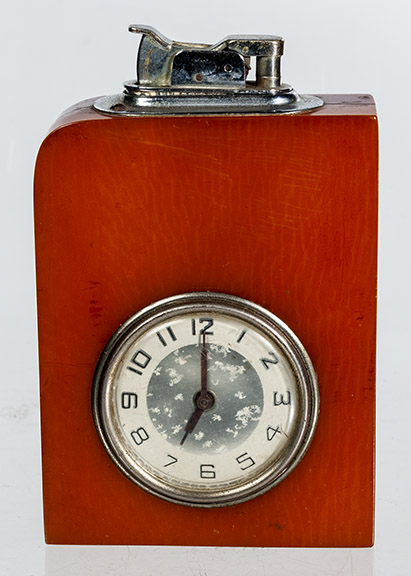 |
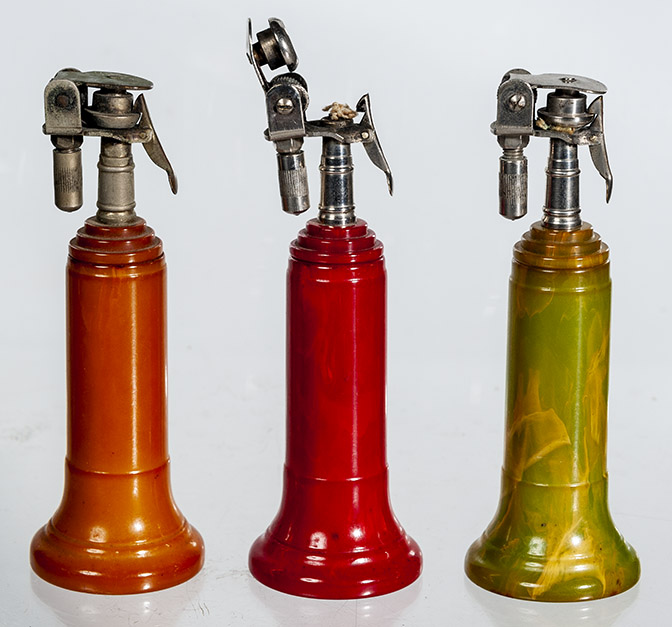 |
| Evans catalin table lighter with clock. Beautiful red and orange colors, ca.1930s | 1930’s bakelite table lighters |
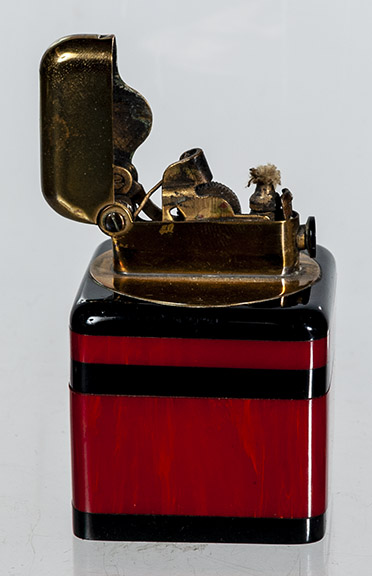 |
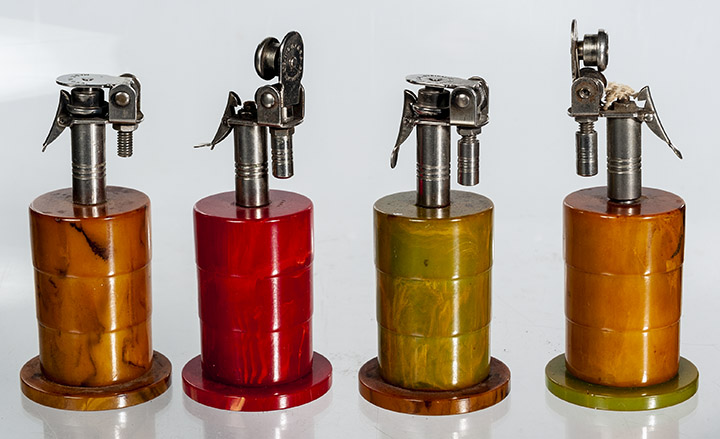 |
|
Thorens bakelite table lighter. Beautiful crisp colors, ca. 1920s |
Four cylinder bakelite table lighters 1930’s |
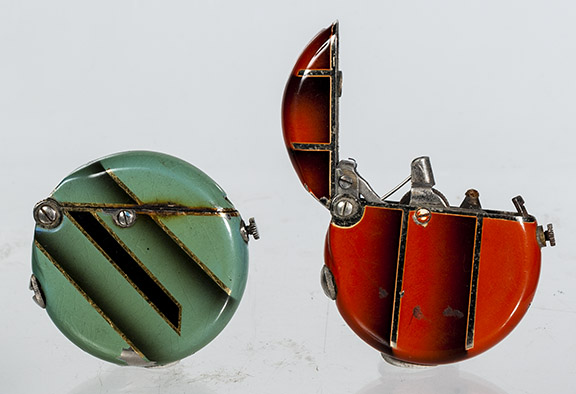 |
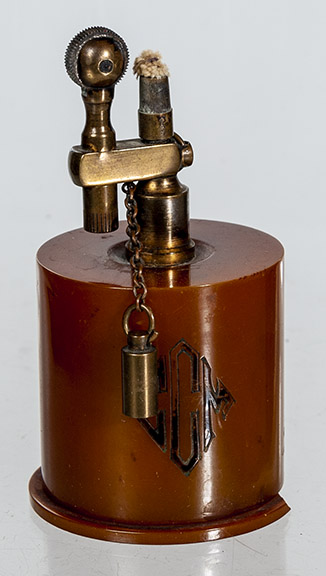 |
Art Deco Thorens lighters, 1920s |
Yellow catalin 1930s |
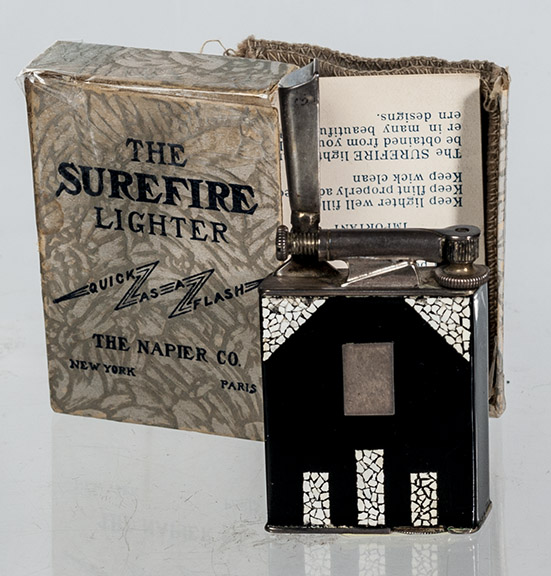 |
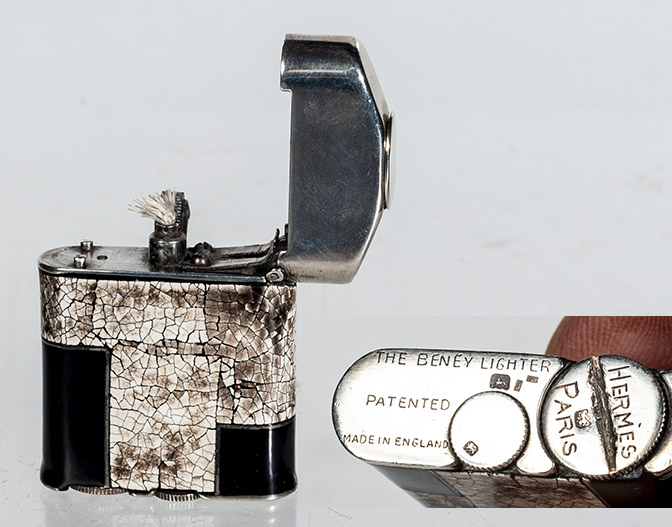 |
| Art Deco Napier sterling silver lighter in box- Black and eggshell enamel, 1920s | Beney retailed by Hermes sterling silver eggshell, ca.1929 |
Books on Cigarette Lighters | Home | Gallery 2 | Gallery 3 | Gallery 4| Gallery 5 |
For Sale 1 | For Sale 2 | For Sale 3 | For Sale 4 | Links
© 2022, Vintagelightersnj.com. All rights reserved.
Website Design by Stuart Schneider